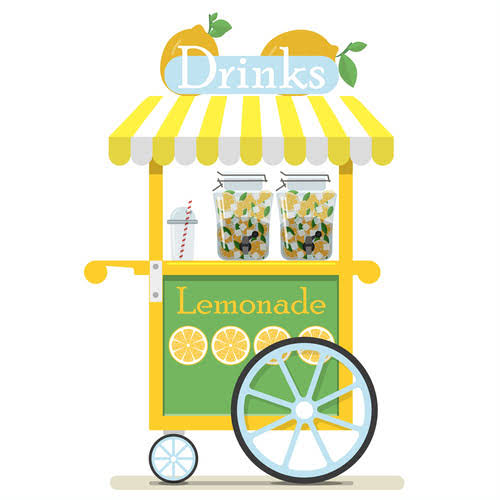Лучшие стратегии для бинарных опционов 2022
1 noviembre, 2021Bad Credit Loans Minnesota Fast Approval
24 noviembre, 2021Content

A company with a quick ratio of 1 indicates that quick assets equal current assets. This also shows that the company could pay off its current liabilities without selling any long-term assets. An acid ratio of 2 shows that the company has twice as many quick assets than current liabilities. Upon dividing the sum of the cash & equivalents, marketable securities, and accounts receivable balance by the total current liabilities balance, we arrive at the quick ratio for each period. For some companies, however, inventories are considered a quick asset – it depends entirely on the nature of the business, but such cases are extremely rare. The current ratio is a liquidity ratio that measures a company’s ability to cover its short-term obligations with its current assets. The biggest difference in the two ratios is that the current ratio accounts for inventory but the quick ratio does not.
- Cash flow and financial statements help them understand how your business generates money and how well you manage cash.
- Therefore, the quick ratio is not impaired, as there is no requirement for the valuation of the closing stock.
- Quick assets include cash and assets that can be converted to cash in a short time, which usually means within 90 days.
- Working-capital financing companies may acquire some or all of a company’s accounts receivable or issue loans using the accounts receivable as collateral.
- In the fiscal year of 2017, XOM had a quick ratio of 0.5, meaning that for every $1 of current liabilities, the company had $0.50 of cash and equivalents on hand.
- The quick ratio is similar to the current ratio, but provides a more conservative assessment of the liquidity position of firms as it excludes inventory, which it does not consider as sufficiently liquid.
Use the appropriate numbers from the most recent balance sheet and plug them into the formula. Quick Ratio If the result is “1”, that means the company has just enough to cover expenses.
Advantages and Limitations of Quick Ratio
If that company were to have $40 million in current liabilities, the company’s quick ratio is 3.0x. The quick ratio compares the short-term assets of a company to its short-term liabilities to evaluate if the company would have adequate cash to pay off its short-term liabilities. Otherwise referred to as the “acid test” ratio, the quick ratio is distinct from the current ratio since a more stringent criterion is applied to the current assets in its calculation.
What does a quick ratio of 2 mean?
Conversely, a quick ratio between 1 and 2 indicates you have enough current assets to pay your current liabilities. A quick ratio of exactly 1 means that your current assets and your current liabilities are equal. A ratio of 2 indicates that your current assets double the amount of your current liabilities.
Information is from sources deemed reliable on the date of publication, but Robinhood does not guarantee its accuracy. Knowing the quick ratio can also help when you’re preparing financial projections, no matter what type of accounting your company currently uses.
More Business Planning Topics
It may have to look at other ways to handle the situation, such as tapping a credit line for the funds to pay the supplier or paying late and incurring a late fee. The quick ratio includes payments owed by clients under credit agreements . But it doesn’t tell us when client payments are due, which can make the quick ratio misleading as a measure of business risk.
- We also reference original research from other reputable publishers where appropriate.
- While leaders can use this ratio as a fast way to predict any upcoming cash shortages, they should be looking at the full financial picture before making any quick decisions.
- However, a business with a quick ratio too high over 1.0 is likely not utilizing its assets properly.
- Cody has a Master’s Degree in Business Administration and nearly 10 years of industry experience.
- That said, if your business produces financial statements only once a year at tax time, that’s likely not enough to keep an accurate pulse on the state of your business.
It puts Microsoft in a very comfortable position from the point of view of liquidity / Solvency. Prepaid ExpensesPrepaid expenses refer to advance payments made by a firm whose benefits are acquired in the future. Payment for the goods is made in the current accounting period, but the delivery is received in the upcoming accounting period. So, current assets and current liabilities are $ 75,000 and $ 30,000 respectively. If a company has extra supplementary cash, it may consider investing the excess funds in new ventures.
Who Reviews the Quick Ratio and Current Ratio?
Also, if there are other businesses that may be affected in case of bankruptcy, then this could impact whether any claims would be paid back in full or just partially. The same is true for contingent liabilities such as tax filings and litigation matters. Ideally, most companies would want to have a quick ratio of 3 or higher.

Businesses aim to keep their quick ratio as close to 1.0 as possible, or slightly over. This means for every dollar of current liabilities a business has, it wants to have a dollar in cash or in an asset that can be quickly converted to cash such as accounts receivable or marketable securities.
Calculate Quick Ratio in Excel (with excel template)
He holds a Bachelor’s degree from the University of Minnesota and has over fifteen years of experience working with small businesses through his career at three community banks on the US East Coast. In a prior life, Tom worked as a consultant with the Small Business Development Center at the University of Delaware. When used in conjunction with other Ratios and Financial Metrics, the Quick Ratio becomes an invaluable tool to measure the health of a company. The name acid test ratio is in reference to the historical use of acid to test metals for gold by early miners.

https://www.bookstime.com/ is a formula used to determine a company’s ability to pay its short-term liabilities. The quick ratio takes current assets and compares that amount to current liabilities. In other words, it is the total of all of a company’s cash, as well as non-inventory assets that can be quickly turned into cash, divided by its short-term financial obligations. The quick ratio is sometimes referred to as an ‘acid-test’ or acid-test ratio. The quick ratio measures the dollar amount of liquid assets available against the dollar amount of current liabilities of a company. A company may have a high accounts receivable balance, meaning clients owe it lots of money.
Quick ratio can help your company
Of Microsoft is a low 0.110x; however, its quick ratio is a massive 2.216x. So that puts Microsoft in a very comfortable position from the point of view of liquidity/solvency. While Unilever’s quick ratio has been declining for the past 5-6 years, we also note that the P&G ratio is much lower than Colgate’s. Liquidity RiskLiquidity risk refers to ‘Cash Crunch’ for a temporary or short-term period and such situations are generally detrimental to any business or profit-making organization. Consequently, the business house ends up with negative working capital in most of the cases.

Accounts ReceivablesAccounts receivables is the money owed to a business by clients for which the business has given services or delivered a product but has not yet collected payment. Quick ratio / acid test ratio should always be analyzed alongside other liquidity ratios, such as current ratio or cash ratio. Cash equivalents are assets that can be quickly converted into cash, such as short-term investments or accounts receivable.
Like any ratio, the quick ratio is more beneficial if it’s calculated on a regular basis, so you can determine whether your number is going up down, or remaining the same. If you’re still confused about how to calculate the quick ratio, we’ll take you through the process step-by-step. Marketable securities are financial instruments that can be quickly converted to cash, such as government bonds, common stock, and certificates of deposit.
- On the other hand, having a quick ratio higher than one indicates higher liquidity and means you have more than enough liquid assets to cover your current obligations.
- The ability to rapidly convert assets to cash can be pivotal to help the company survive a crisis.
- On the other hand, a company may have shorter payment terms on accounts receivable but longer payment terms for suppliers.
- Investors will often use each ratio side-by-side when making decisions.
- Thus, it should be considered alongside other metrics, such as the earnings-per-share or rate-of-return on investments.
- The biggest difference in the two ratios is that the current ratio accounts for inventory but the quick ratio does not.
Consequently, it would distort the ratio if inventory was used to assess short-term liquidity. For example, some manufacturing companies hold large quantities of raw materials for the production of finished goods, which are then warehoused and sold on credit for a lengthy period of time. Emilie is a Certified Accountant and Banker with Master’s in Business and 15 years of experience in finance and accounting from corporates, financial services firms – and fast growing start-ups. The factor then collects the invoiced amounts directly from your customers, which removes the need to chase and process payments but may have a negative effect on relationships.
